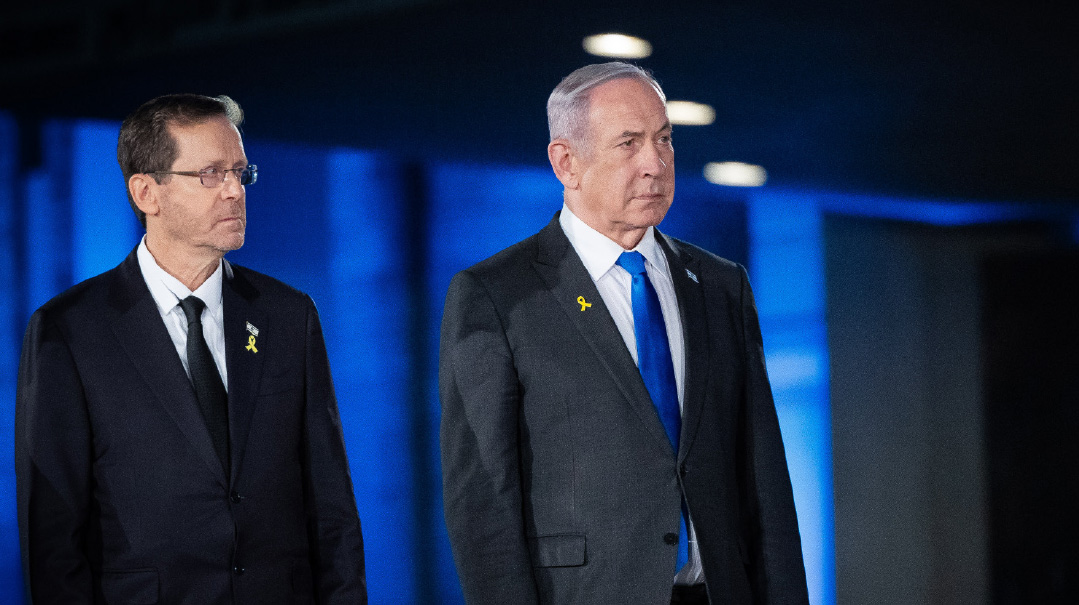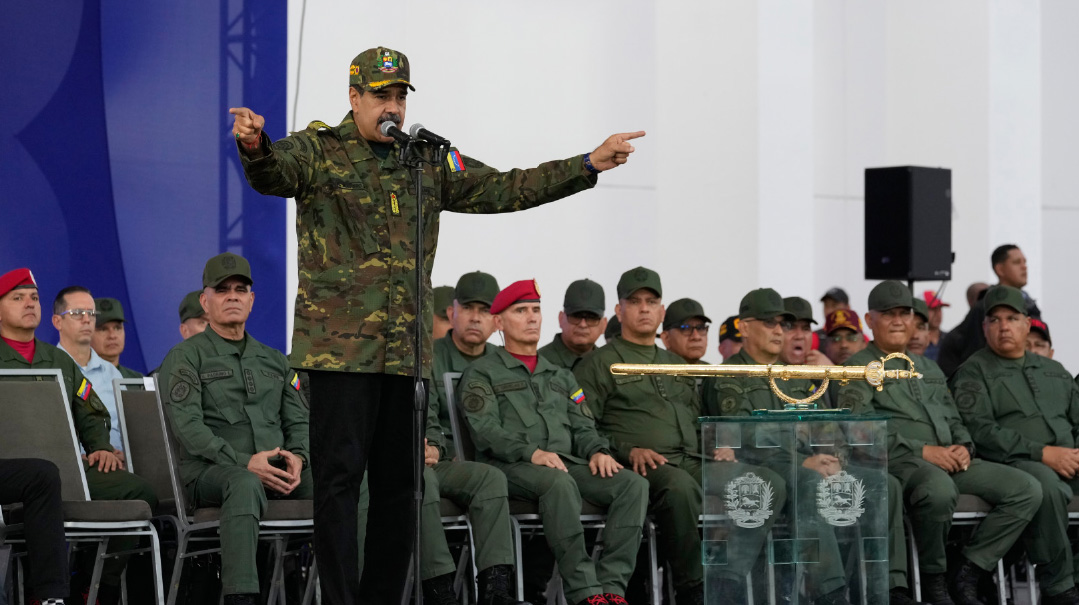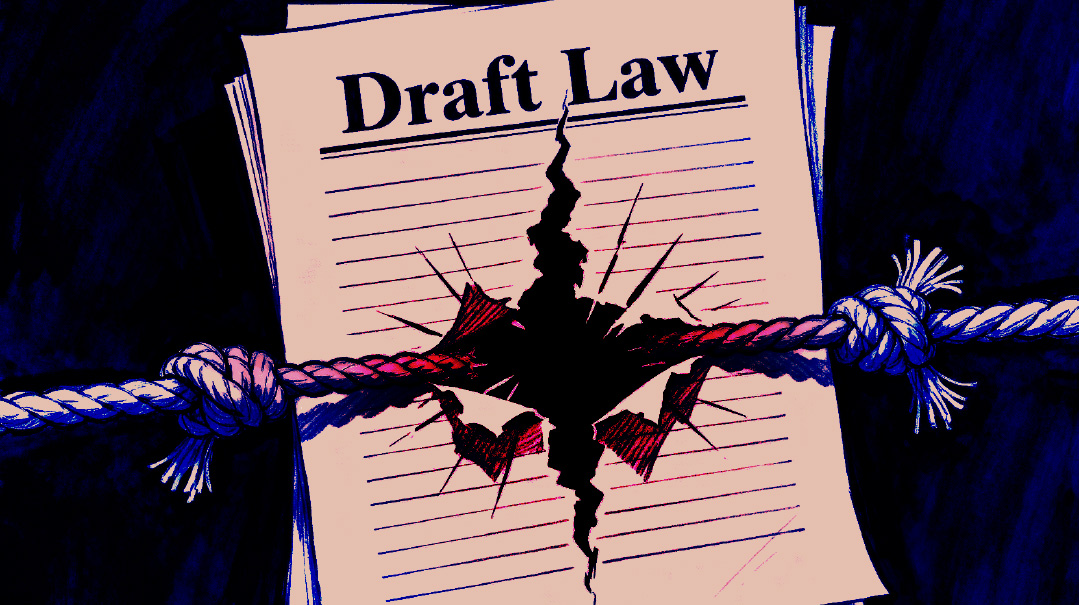Dressed To Kill

In the alleys of Jenin and beyond, terrorists can never be sure who’s signing their death warrant

It’s 5:30 a.m. on January 30, and the security cameras at Ibn Sira Hospital in the Samarian terror refuge town of Jenin don’t show anything out of the ordinary. A cluster of doctors and nurses are making early-morning rounds, and a woman in a wheelchair is accompanied by two female family members. Yet in a sudden twist, the presumed invalid, her escorts, and the medical staff reveal assault rifles and hurry to move in on their target. Ten minutes later, they’ve evacuated the premises, after having eliminated three wanted terrorists hiding out in one of the hospital’s examination rooms.
This is the modus operandi of elite commandos trained to infiltrate the heart of Arab society and seamlessly blend in. They are the “mista’arvim.”
While the video of the incident went viral, there is much more about these units that remains unknown — and that is the key to their success. Despite the fascination of media consumers with the cloak-and-dagger Mossad, the creation of these units has played a crucial role in preventing attacks, making arrests, and, of course, eliminating enemies. Their stories are no less compelling than those of the more prominent international intelligence agency, and some may even argue that it’s easier to go unnoticed on the French Riviera than in the heart of territories controlled by Palestinian terror lords.
Undercover units have been a staple of security since the pre-state Jewish defenders of Palestine. Today, like his predecessors, a mista’arev — who might belong to Duvdevan, Shaked, Shimshon, Yamas, or one of the other secret units — takes on a dual identity after grueling, intensive instruction in Arabic and Palestinian cultural nuances that teaches him how to dress, eat, speak, and even smell like the local populace. That’s in addition to stealth and anti-terrorist combat training.
While each of the units has many members, each of those teammates essentially operates alone. “Ultimately, each operative is in the field as a loner,” related N., a former member of the mista’arvim in the IDF journal Bamachaneh. “Even if there are others from his unit on the same village street, he will still be a loner.” The fear, he said, can be paralyzing. “You’re alone, in the heart of enemy territory, and the smallest misstep could lead you to be discovered.”
On the one hand, the operative lives with the constant threat of discovery by the locals, but ironically, he also lives in fear of the Israeli army. “Sometimes I would encounter a group of IDF soldiers who assumed I was a local, and maybe even an agitator,” said N. “There were situations where Israeli reservists actually chased us and beat us.”
He relates how he and another mista’arev were in a coffee house playing backgammon with the locals. Suddenly, a group of four or five soldiers, who had absolutely no idea that there were mista’arvim in the area, appeared in the room.
“I was petrified,” he recalls. “I had to remain utterly calm and hope that the soldiers would not reach us. After all, I couldn’t simply go over to them in the middle of Jenin and call out, ‘Hey, Itzik, what’s doing? I’m at work right now.’ So I just sat there and tried to remain calm.” But hundreds of hours of training came back to him in an instant. “I pretended to be the village madman. I started shouting like a crazy person and foaming at the mouth. I wanted to make sure that the officer leading the tour, who was certainly familiar with the local parlance, would tell his soldiers, ‘Leave him alone, he’s mentally disturbed.’
“Generally, though, the most important thing is to know how to blend in. The last thing you want to do is attract attention. Once, I bought ice cream along with another comrade, but instead of throwing down the wrapper, I kept it on the stick and slid the ice cream through it.
“Suddenly my buddy hissed, ‘What are you doing?! Do you think you’re in the middle of Tel Aviv?’ ”
A mista’arev will often know the Palestinian town he’s stationed in better than his own neighborhood. Are there turnoffs or alleys on a given street? Is there roadwork? Are there no-entry signs, speed bumps, potholes, or other places where a car could accelerate or be forced to slow down? Terrorists are constantly on the move. They relocate from one apartment to another and switch cars without warning.
“We need to figure out the best possible moment to capture our quarry,” said N. “To do that, you not only need top-notch intelligence, but also to think exactly as if you were in his head. You need to anticipate his next step.”
With a British Accent
How did a tiny peripheral unit that predated the establishment of the State of Israel and initially comprised just four men whose sole asset was their Sephardic origin become a key player in the fight against terrorism? How did a group of soldiers tasked with intelligence gathering evolve into one of the most precise and effective assault tools of the Israeli army? And, most importantly, in an era when any overt military offensive faces scrutiny from the international community, can these elite units become the key to dismantling the enemy from within?
The word “mista’arvim” is the Hebrew adaptation of its original Arabic counterpart, “musta’ribeen.” Essentially translating to “those who want to pass as Arabs,” this term was bestowed upon 15th-century Sephardic Jews who aimed to seamlessly blend into the Arab countries where they resided. Five centuries later, motivations may have changed, but the spirit of the word remains the same.
Oops! We could not locate your form.







